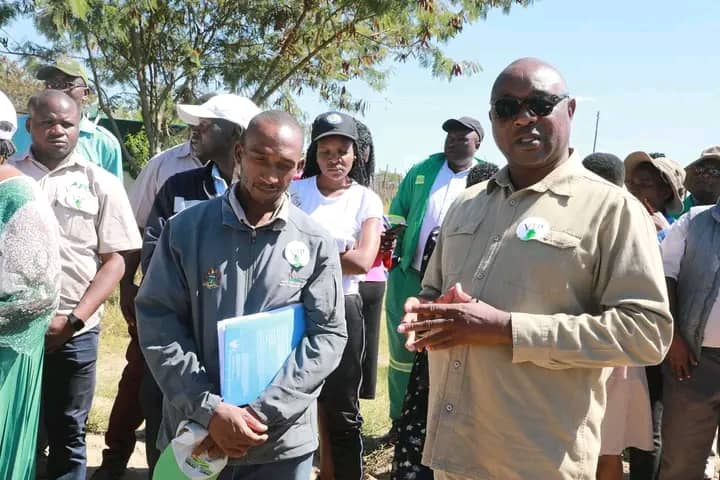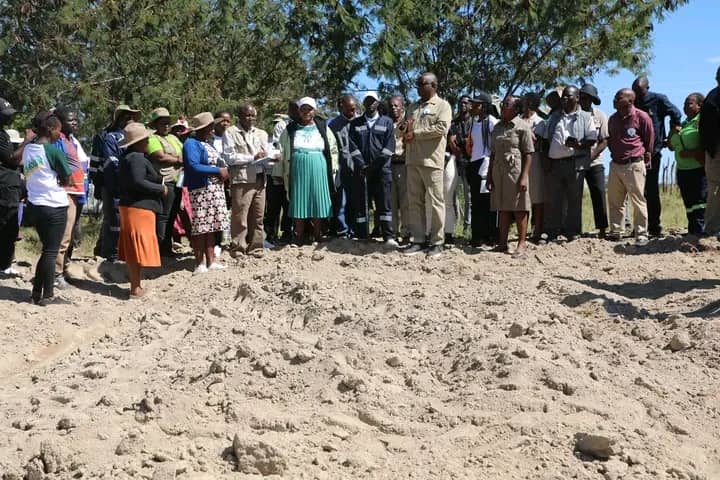Midlands targets 60 000t winter wheat harvest
By Delicious Mathuthu
The Midlands Province is targeting to produce 60 000 metric tonnes of wheat during the 2024 winter season as Government battles to reduce grain deficit in the country following the negative impact of the El Nino drought phenomena in the 2023/24 summer cropping season.
The Midlands Province is this year targeting to put over 10 500 hectares under winter wheat from just over 10 000 last year.
“This year, the Midlands Province has allocated 10,524 hectares for wheat production, an increase from last year’s 10,035 hectares,” the Ministry of Lands, Agriculture, Fisheries Water and Rural Development (MOLAFWARD) said recently (30/04/2024) at Kufumaishungu Farm in Gweru during a stakeholder interaction seminar.
To achieve this target, the average expected yield for the province is projected at 6 tonnes per hectare.
If achieved, this will contribute 19 percent to the national wheat requirement of 320,000 metric tonnes (minimum), the Ministry said.
In 2022, the province planted just under 7 000 hectares, seeing an increase of over 3 700 hectares under winter wheat in the past two seasons.
The main thrust driving the increase is to maximise on available water bodies for irrigation in the country.
“The focus is on utilizing all available water bodies and land to grow wheat for food and nutritional purposes,” the Ministry said.
Zimbabwean President Emmerson Mnangagwa, early April 2024, declared a national state of disaster due to the El Nino drought where he revealed winter wheat as part of Government’s strategy to reduce grain deficit.
He said a shift to wheat based foods would cushion some Zimbabweans against hunger.
“…the winter crop programme for 2024 now assumes added importance and urgency.
“The shift to wheat-based food security means the land we put under wheat from this month (April) must expand to cover all available irrigable land with secure water sources,” said President Mnangagwa during his declaration.
Government strategy on increasing wheat harvest is to either exchange the excess wheat for maize or sell it and buy maize, which is in deficit.
MOLAFWARD Deputy Minister, Hon. Davis Marapira, speaking during the Gweru stakeholder seminar, said agricultural extension officers will be a key ingredient in ensuring a healthy crop and minimising post-harvest losses to maximise yields.
He said indigenous knowledge and technological advancements should be harnessed to come up with hybrid high productivity wheat farming.
“It is imperative that we embrace and promote the co-generation of technology, bringing all wheat producers and stakeholders together as equal partners with rich experiences and valuable indigenous knowledge systems.
“This necessitates a new extension vision, requiring a change of attitude and an expansion of knowledge and skills, including socio-economic, analytical, and problem-solving abilities,” he said.
For the province, Deputy Minister Marapira said to achieve it’s target, there are is need for trained farmers who will be able to move from subsistence to commercial cropping.
“Midlands is tasked with serving the needs of various wheat farmer clienteles by developing, providing, and promoting sustainable agricultural programs that enhance competitive and economically viable productivity.
“This demands well-trained and equipped farmers who can transition from smallholder agriculture to a commercial economy, thereby increasing food and nutrition security,” he said.
The national targeted hectarage for 2024 is 120 000, with a projected harvest of about 600 000 tonnes at 5 tonnes per hectare, as said by MOLAFWARD Minister, Dr. Anxious Masuka.
Zimbabwe requires 360 000 metric tonnes to be wheat sufficient, with current MOLAFWARD Permanent Secretary, Professor Obert Jiri on record saying Mozambique and Rwanda have ready markets for any access wheat in the country.
In 2022 Zimbabwe became one of the only two African countries wheat sufficient, the other being Ethiopia, after recording 375 000 metric tonnes.
Zimbabwe Government’s long term target is to put over 350 000 hectares under irrigation.



